Are you looking for a way to boost your website’s rankings and traffic without spending thousands of dollars? Do you want to get more customers who will buy from you?
In order to achieve these goals, you need to focus on search engine optimization (SEO). This means making sure that your content ranks high in Google searches. It also means optimizing your site for mobile devices.
If you’ve never launched an SEO campaign before, then you might not realize how difficult it can be. From on site optimization, to content creation, to link building, there are many steps to the puzzle that are not always obvious or easy. In fact, getting results can be a very open-ended endeavor.
Without experience, it can seem like an insurmountable challenge that is a mystery to all of those but the most ardent professionals.
However, it’s possible to launch an SEO campaign that gets results successfully, even if you’re just starting out or haven’t been doing SEO all that long.
When setting goals for your SEO campaign, be sure to not lose sight of what you want to ultimately achieve. AHREFs provides what they call the SEO goal pyramid so you can use it to help you make sense of the framework you are trying to achieve:
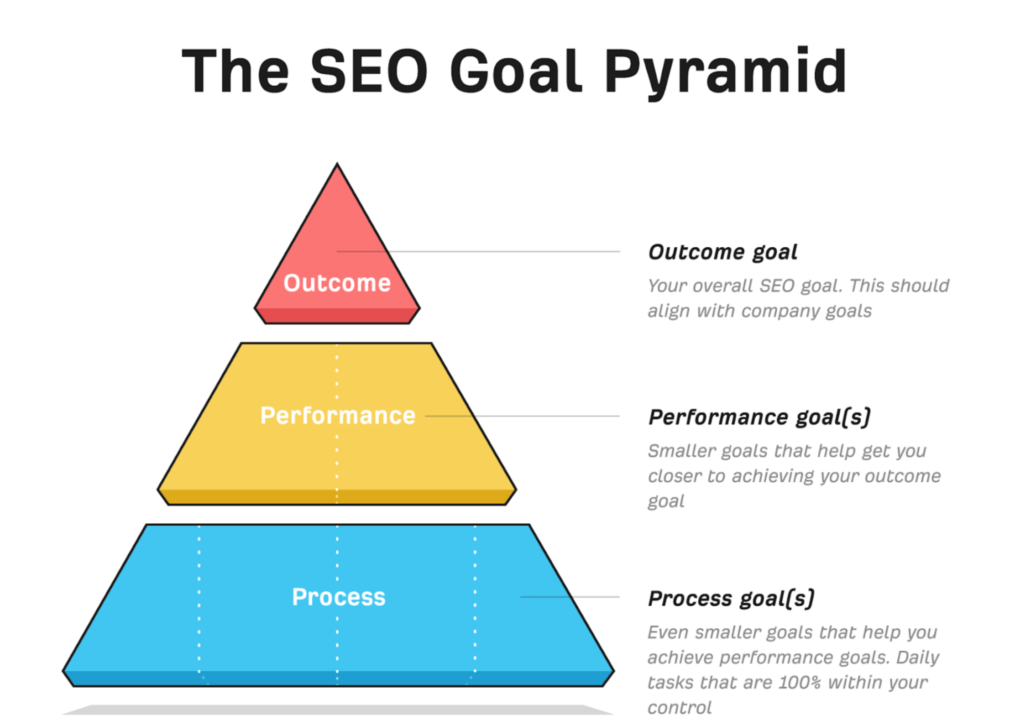
What Is an SEO Campaign?
An SEO campaign is a coordinated attempt to improve a website’s position in search engines. This includes optimizing webpages for certain words and phrases, building backlinks, and using social media to promote the site. All of these factors are part of what makes up an SEO strategy.
The process begins with keyword research. Keywords are important because they help you find relevant content on your site. They’re also used to determine how much traffic you’ll receive from search engines like Google.
Once you’ve found some good keywords, it’s time to write some quality content. You want to make sure that each piece of content is unique and useful. Search engines look at several different factors when determining where to place a webpage in search results. One of those things is the number of times a page has been updated. If you update your blog frequently, search engines will see that you’re active and give your site a boost.
Next, you’ll want to build links. Backlinks are external sources that link to your website. These could come from another webpage or a blog post. When someone shares a link to your website, it tells search engines that there’s interesting information on your site.
Finally, you’ll want to use social media to promote your content. Social media sites are great tools for promoting your content. People love sharing interesting articles and videos, so you can reach a lot of people this way.
We will cover how to create an SEO campaign from scratch for an existing website, as well as the parts of the process that are different for creating an SEO campaign for a new website.
BriefCiel.com explains the essential elements of creating a successful SEO campaign:
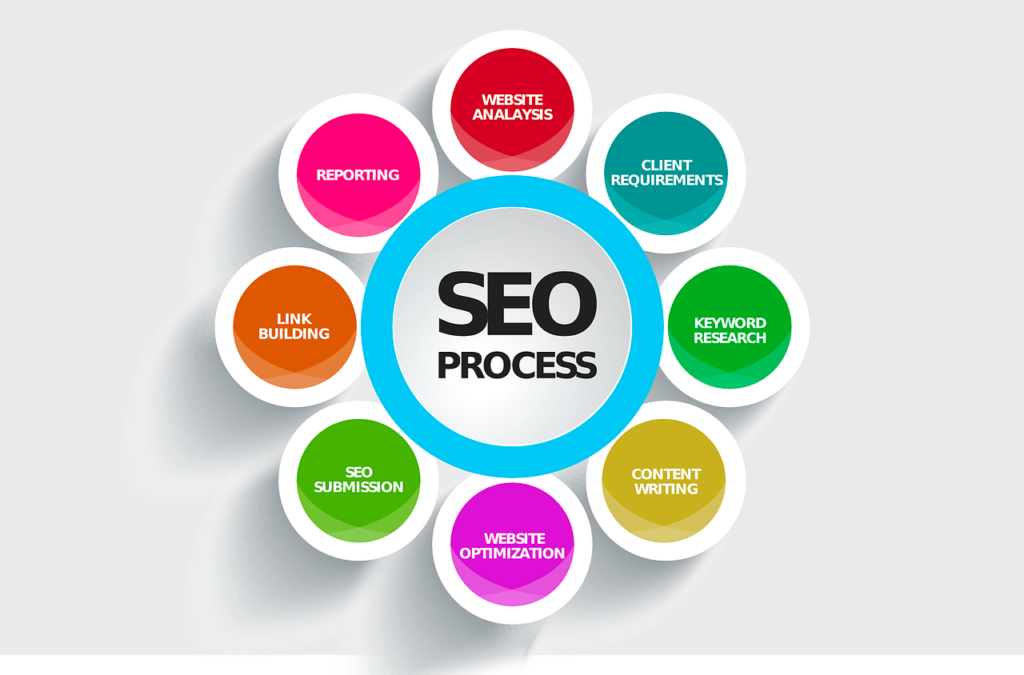
What is SEO Campaign Management?
When it comes to managing your online marketing efforts, there are many different types of campaigns to consider. Some are short term, while others could span months or even years. There are paid campaigns, organic campaigns, and everything in between. You might have a few campaigns running simultaneously, or maybe you’re just starting out. Regardless of what type of campaign you run, you’ll want to keep tabs on how things are progressing. This includes monitoring traffic sources, keywords, landing pages, conversions, and much more.
The best way to do this is to use tools that allow you to see all of your data in one place. With the help of some software, you can set up alerts, monitor performance over time, and make adjustments based on the information you receive. If you don’t know where to start, here are some tools that can help you manage your entire digital marketing strategy.
Google Analytics
Google Analytics is free and easy to use. Once installed, you can log into your account and view detailed statistics about your site visitors. From there, you can segment your audience by age, gender, location, device, operating system, and more. You can also track conversion rates, bounce rates, and average session times. All of this information helps you understand what people like most about your site, and what changes you should make to improve your overall experience.
Moz Pro
Moz Pro is another great tool for tracking your progress across multiple platforms. It allows you to compare keyword rankings, competitor analysis, social media mentions, and more. In addition to providing analytics, Moz Pro offers insights into why certain keywords perform better than others. For example, you might find that certain terms bring in more leads than others because they are easier to rank for. By understanding this information, you can adjust your future strategies accordingly.
Screaming Frog
Screaming Frog is a web crawler that indexes websites and finds any broken links. It does this without having to be manually updated, which makes it perfect for long-term projects. The program has several advanced features, including the ability to crawl images, PDFs, and other files. It also provides a number of useful reports, such as a list of duplicate pages and a report showing the top 10 referring domains.
Semrush
Semrush is a powerful tool for finding relevant keywords and analyzing your competitors. It’s especially helpful when you need to find new ideas for content creation. The platform analyzes millions of search results every day, so you won’t have to spend hours searching through them yourself. You can filter your results by industry, language, and more. After you’ve found the right keywords, you can export them to Excel or Word for further research.
HubSpot CRM
HubSpot CRM is a cloud-based customer relationship management (CRM) solution that integrates with your email marketing service. It allows you to create automated emails that send targeted messages to specific contacts depending on their interests. The platform also tracks interactions with customers, helping you identify trends and opportunities for growth. This means you’ll always be able to provide exceptional service, even if you’re short on staff.
Brafton provides some examples of the methods that may be included in a successful SEO campaign:
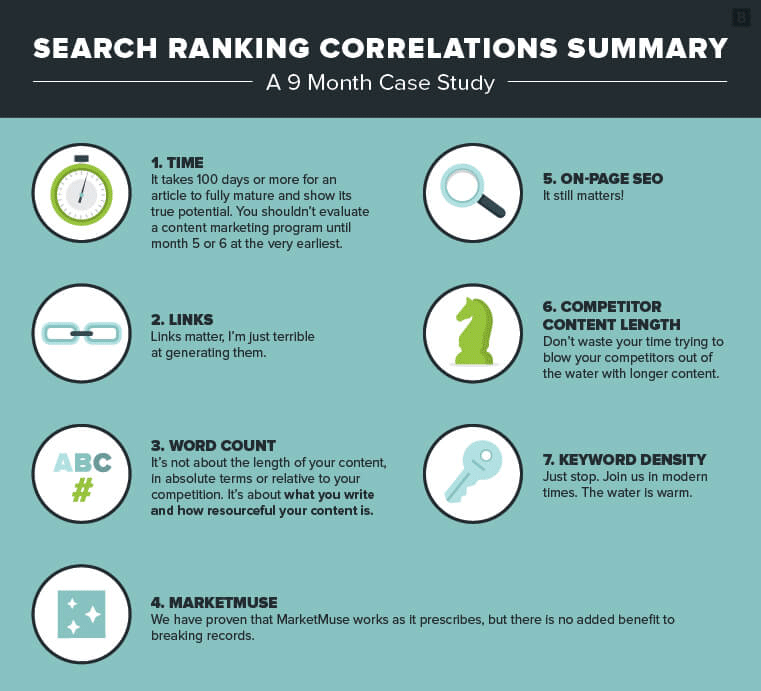
How Important is SEO?
Search Engine Optimization (SEO) is one of the most effective ways to market your products and services online. It helps businesses gain visibility on the internet and increases the chances of getting found by potential clients. However, SEO isn’t just about making sure your site appears high up in the rankings; it’s about building lasting connections with people.
The best SEO strategies are built around the idea of creating long-term value for both your client base and yourself. You’ll find that there are several components to an effective SEO strategy, such as keyword research, link building, social media marketing, etc., but the main goal is always the same: to make sure your site gets found.
The world of SEO is constantly changing. However, there are some things about SEO that haven’t changed since 2012. One of those things is the importance of SEO. Whether you’re looking for a job or just trying to grow your business, SEO is one of the most effective ways to achieve success. If you’ve been thinking about starting an SEO campaign, here are five reasons why you should start now.
Search Engines Are Still King
Google remains the dominant player in the search engine space, which means that SEO is still important. Google’s algorithm changes frequently, but the company continues to put its focus on user experience above anything else. As a result, SEO will continue to play a major role in driving traffic to your website.
People Trust Organic Search
Organic search results are generally perceived as being trustworthy because they appear at the top of the page. They also tend to get higher click-through rates than paid ads. These factors mean that users are more likely to convert from organic search results than from paid ads.
SEO Can Be Effective With the Right Agency or Contractor
If you are looking to improve your rankings in the search results, you get what you pay for. And that holds true in SEO. Don’t think that spending $100 per month is going to get you anything beyond surface-level SEO for extremely easy keywords that may not bring you any traffic at all. Sure, you’re going to rank. But for terms that nobody is ever going to be searching for anywhere.
SEO Is Not Rocket Science
SEO is slightly more complex than knowing how to use a computer. There are many moving parts and things you have to know about so you can make SEO work correctly. But, once you understand the basic concepts, you can easily implement them into your own SEO strategy. It’s also not rocket science. The power of hiring others to do your SEO for you, though, is through scaling. By implementing an effective scaling strategy, you can multiply your efforts tenfold without those efforts taking a toll on your physical and mental health.
SEO is Easy to Maintain With the Right Staff
Once you launch your SEO campaign, it won’t take much effort to keep it going. You’ll only need to publish content regularly and perform minor tweaks every once in a while. Even if you’re not familiar with SEO, this shouldn’t be too difficult to master.
More competitive SEO strategies, however, will need an entire staff to implement well. They have many more moving parts that need to be implemented correctly. And while some might believe that SEO is as simple as operating a computer, it’s not. And it’s a complex discipline to master.
What Are the Benefits of an SEO Campaign?
There are many benefits of implementing an SEO campaign. From boosting your company’s credibility, to cheaper costs compared to other advertising channels, and supporting content marketing, just about any customer can realize the benefits of a successful SEO campaign. Usually, the only ones who don’t realize benefits have either 1. Not implemented things correctly on their campaign, 2. Are not doing something else that’s needed, 3. May have expectations that are misaligned, in spite of consistent education from the SEO company.
DigitalMarketingStudio.in provides examples of the benefits of an SEO campaign:

How to Create a Successful SEO Campaign for an Existing Website
There are two types of SEO campaigns that you will consistently run into: creating an SEO campaign for an existing website, and creating one for a new website. Most steps are similar, but there are different angles for each step depending on which type of SEO campaign that you are creating. For example, keyword research for a new website will focus on creating a batch of around 100 keywords that have high search volume, but lower competition, so you can rank quickly for the low hanging fruit opportunities before moving on to the more difficult keywords.
On the other hand, keyword research for an existing website is about looking where the website is at currently for their chosen keywords, refining keyword choices, and making adjustments to the keyword strategy where needed, depending on how user behavior has changed over time.
Analyze Your Existing Website’s Performance
Before you can move forward, it helps to know where you are currently at. If you’ve been working hard on your site for months, chances are you’ve seen some progress. But how do you know what needs improvement? Although you could review your analytics data, there are better ways to track your current position.
Reviewing pages and seeing where those pages are ranking now can be a great indicator of the changes you’ll need to make with your next SEO campaign. This can also help you understand where your previous SEO efforts did well or even failed, making it easier to plan for the next one.
Since this information will be the basis for future results, be certain to include as much detail as possible. Include things such as:
- Page Speed – How fast does your site load? Is it mobile friendly?
- Keywords – What keywords are bringing traffic to your site today?
- Content – Do you have enough relevant content? Are you providing quality content?
- Links – Where are your most important external sources linking to your site?
- Social Media – Have you invested in social media marketing?
- Analytics – Which metrics are tracking best?
Define Your SEO KPIs (Key Performance Indicators) and Goals
The next step is to define exactly what you want your SEO strategy to accomplish. This is where you decide whether you want to focus on improving rankings, increasing organic traffic, or boosting conversions. You might also consider setting goals around how much money you want to spend per month on paid advertising versus organic traffic generation.
Once you’ve defined your goals, it’s time to evaluate how to measure success. How do you know if you’re making progress towards achieving those goals? What metrics matter most to you? Do you care about monthly revenue growth? Or perhaps you’d rather see an increase in conversion rates. Whatever your metric of choice is, make sure you track it regularly.
For example, if you wanted to improve your rankings and click-through rates (CTR), you would want to track this data on a monthly basis in a spread sheet. This way, you can create comprehensive reports for your client(s).
Ensuring a comprehensive reporting process will help you continue to improve your credibility as an SEO agency worthy of continued business.
Create Awesome Content, Improve Your Existing Content, and Improve Your Internal Linking
If you want to rank for competitive keywords, you need to write great content. And you need to make sure people find that content. One way to do both is to create evergreen content. Evergreen content is content that doesn’t change much over time. You don’t update it every week or month. Instead, you post one article per quarter or once a year. This gives you a chance to build up authority around your brand while providing useful information to readers.
But what about those times when you need to add something new to your site? Or maybe you just want to write some new content to help boost traffic. Well, there are ways to do both. Here are three tips to help you create awesome content and improve internal link building.
Write Great Content
The best way to ensure that your content is amazing is to start out by writing good content. If you’re struggling to come up with ideas, try brainstorming. Brainstorming is simply taking a topic and thinking about how you could approach it from different angles. For example, if you wanted to write about “how to make money online,” you might think about starting off by listing the things you’ve learned along the way. Then, you might consider asking yourself questions like: What did I learn that helped me succeed? How did I fail? Why do I think others haven’t succeeded?
Once you’ve got your list down, take a look at each idea and ask yourself whether it’s really worth pursuing. Are you passionate enough about it? Do you know anyone else who’d be interested in reading about it? Is it something you could easily research and write about? If you answered yes to all of those questions, then you probably have a winner.
Now that you’ve written your initial piece, you’ll want to make sure it’s keyword rich. Keyword research is a huge part of writing great content. There are plenty of tools out there to help you find the right words for your niche, including WordStream, Moz, and BuzzSumo.
Once you’ve found the right keywords, use them throughout your content. Don’t just throw them into the middle of the text; sprinkle them throughout. This makes it easier for the reader to find them and helps them stand out.
Create Unique Content
While you should always strive to write unique content, sometimes you may not have the luxury of doing so. In these cases, you can still create great content by making sure it stands out.
One way to do this is to focus on creating high quality images. Images are often overlooked when it comes to content creation, but they can really set apart your work. They also allow you to include more than just text, making your content more visually appealing.
Another way is to look at other websites for inspiration (but don’t copy them). Look at what they are writing and talking about, and figure out how you can do better.
One great way to do this is to use the Skyscraper technique, which uses the principle of 10x content in content creation.
By creating the absolute best example of the content on your site in your niche, you create what Google loves to see, and it helps to improve the chances of your page ranking for the queries that you want.
Improve Your Internal Linking
On an existing website, internal linking can become a chore, depending on who is doing it. It can become very disorganized very quickly if you don’t keep track of your tasks.
This is why you must take a periodic look at your internal linking structure.
Doing so can help you identify errors, linked pages that were deleted but not redirected, as well as internal linking opportunities that can help improve the targeted page.
Don’t just link randomly. Use related, relevant pages to help boost your internal linking. If you don’t have relevant pages, then create some. And try to identify what kind of pages other sites are using in their internal linking SEO silos.
Check Your Technical Optimization
If you are looking to rank highly on Google, there are many factors that go into making sure your site performs well. One of those factors is ensuring that your site is technically optimized. While most people think about optimizing their sites for mobile devices, Google wants to see that you have optimized your site for desktop users, too.
Make sure all of your meta description and title tags match your intended keywords. This helps Google understand what your page is about. You want to make sure your meta descriptions are concise and descriptive, while your title tag should include your targeted keywords.
And double-check things like your broken links and other little issues that could make it harder to show at the top of the SERPs, such as having duplicate pages listed in the first page results.
If it makes sense to use Structured Data with your content, ensure that it is installed and working properly. This allows Google to better understand what your page is offering.
In addition to making sure you are optimizing your site for mobile devices, there are some other key areas where you might want to focus your attention. For example, one area that many brands overlook is their meta description. This is a short piece of text that appears under the URL of each webpage. It’s meant to give searchers a quick summary of what the page contains and why they should visit it.
The meta description tag is just another way to optimize your site for search engines. You don’t want to overdo it though. A good rule of thumb is to keep it less than 160 characters long. Longer descriptions tend to look spammy, while shorter ones can sometimes lead to people clicking away without reading anything.
Another thing you should consider doing is checking your page load times. If it takes longer than 3 seconds to load, it could cause visitors to bounce off your site.
You can test how fast your site loads by using tools such as GTMetrix and PageSpeed Insights. These sites offer free trials, so you can see exactly how much faster your site performs compared to others.
If you find something that needs fixing, take action immediately. Otherwise, you risk losing out on opportunities for ranking.
Trim Underperforming Pages, or Optimize Them
There are some who believe that you should delete underperforming pages – if they don’t receive traffic, then they should be removed because they are weighing down your site.
It is likely that they may be pages that are irrelevant. It’s important to make sure that you don’t delete pages just because they don’t have any traffic. That doesn’t mean they are irrelevant. If pages contribute to the overall topical authority, have relevance in terms of topic, and they count as your website covering that topic, then they should not be deleted.
If you have pages that are underperforming, all is not lost. It’s still possible to optimize them.
For example, say that you have a page that’s ranking on page 2 or 3, and it’s not receiving any traffic. If the page is relevant to your overall topic, don’t delete it! Instead, you want to do more research into the top 10 ranking sites on the search results (if you haven’t done so already), and identify where improvements will be needed. Maybe you need to add some FAQs from the People Also Ask section. Or perhaps you need to expand the content so it covers more of the topic in-depth.
Whatever the case may be, doing an internal audit of your underperforming pages and performing some comprehensive optimizations can deliver significant results after the optimizations have been completed.
Track your results
You’ve spent months building up your brand, creating great content, optimizing your site, and getting it ranked high in the search engines. But now what? You want to make sure that your efforts are paying off, but where do you start?
The answer is simple: track your traffic. If you don’t already have a tool like Google Analytics set up, there’s no better place to start than here.
Google Analytics allows you to track everything about your visitors’ journeys – including where they came from, where they went once they got to your site, and how long they stayed. This information helps you understand what works and what doesn’t work in terms of SEO, and gives you insight into whether you’re making progress toward your goals.
AHREFs provides an example that shows how the completion of a new website could potentially look:
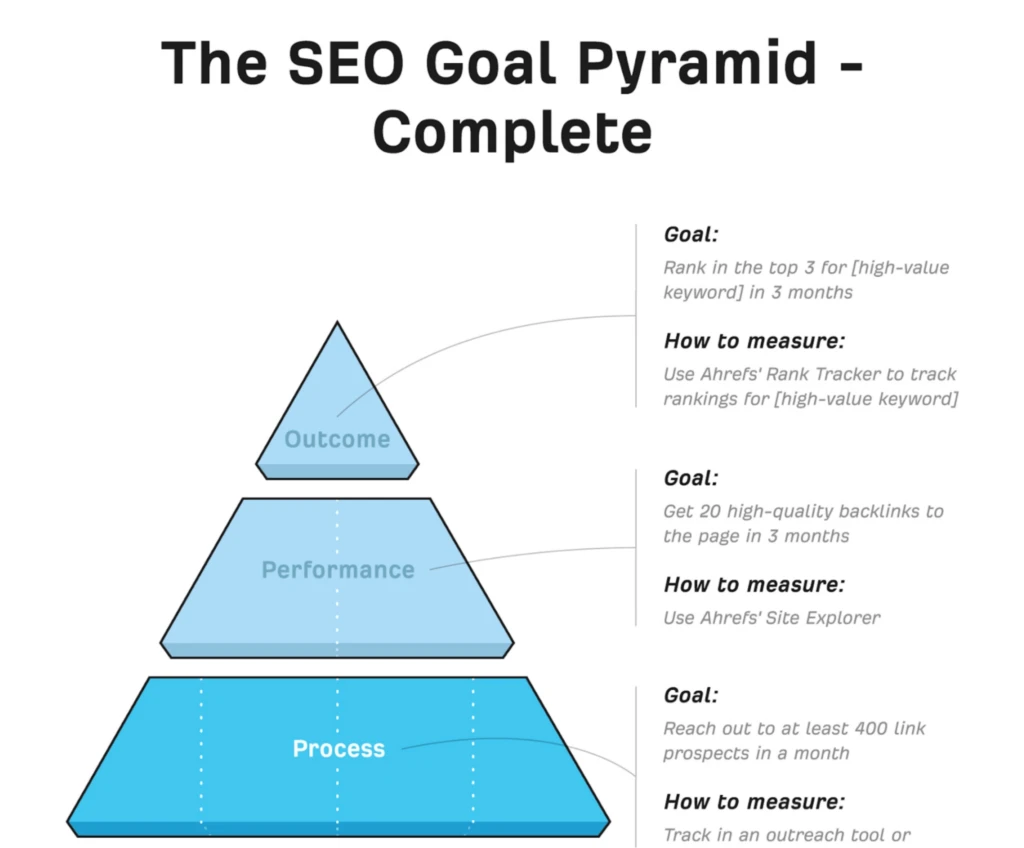
How to Create a Successful SEO Campaign for a New Website
When you are creating an SEO campaign for a new website, there are differences in how a campaign is managed. For example, you probably don’t have prior keyword research completed. You also probably don’t have a plan. For all intents and purposes, this kind of website is basically a startup. So, you have to come up with all of your targeted keywords, you have to identify your competitors, everything.
Step 1: Find Keywords
Keyword research is the first thing every SEO needs to do. If you don’t know what keywords people use to find your product/service, you’re missing out on a lot of traffic. You might think that you already know what terms people are searching for, but it’s possible that you haven’t thought about some of the most important ones.
Google Keyword Planner is one of the best tools for finding keywords. It’s a great place to start because it gives you lots of data, without having to pay anything. Here’s how to use it.
Find More Keywords Using Google Trends
Google Trends is another free tool that helps you find keywords. This tool lets you see how many searches there are for certain words over time. For example, let’s say you wanted to rank for “best dog food.” You could type that into Google Trends and see how many times it came up over the last few months. Then, you could go ahead and enter those same keywords into Google Keyword Planner and compare the numbers.
If you notice that the number of searches for “dog food” is much lower in Google Keyword Planner than in Google Trends, you may want to try something else.
Use Long-Tail Keywords
Long tail keywords are more specific and less competitive. They can help you target smaller niches within larger categories.
Use Keywords People Are Actually Searching For
And this means finding keywords with a high search volume. The higher the search volume, the more competition there will be for those keywords. So, if you want to rank well for a keyword that has low search volume, you’ll need to come up with creative ways to get attention.
Step 2: Publish Long-form High-Quality Content
The days of publishing short, 500-words blog posts are long gone. Today, we’re talking about writing comprehensive content that’s optimized for search engines like Google. This type of content includes longer articles, infographics, videos, podcasts, etc.
Longer content tends to perform better because it provides more information to readers. But don’t just write for length; make sure you’re providing value to your audience. If you do, you’ll see more traffic and conversions.
In fact, here are a few statistics about long-form content from SEO.co:
- The average 1st result on Google has a blog length of 1,500 words. Source: Backlinko
- Content with > 7,000 words gets more than 3x the number of shares and links. Source: MarketingCharts
- Blog posts are getting longer: the average blog post length is now over 1,400 words long. Source: OrbitMedia
- When it comes to the first five positions in Google, shorter length appears to have a higher correlation to first page rankings. Source: CognitiveSEO
- Longer posts (2,000 words+) tend to rank higher and more readily appear in the top 10. Source: CapsicumMediaworks
If your blog has nothing but shorter content that doesn’t have much value, it would be a wise move to consider expanding your content and doing more search analysis on the keywords you want to eventually rank for.
Step 3: On-Site Optimization
After writing some great content, you want to work on making sure your site is optimized. This means that you are paying attention to things like keyword targeting, content length, keyword integration in your content, heading optimization, page titles, meta descriptions, and every possible optimization point on your pages.
We cover how to do this in our guide to on-page optimization here.
But, on-site optimization is still a critical task and should not be ignored. There is a major difference between how a site with too much code bloat and a site with optimized code performs in the search results. There is also a big difference between a site that has optimized images vs. a site that doesn’t.
Step 4: Build Backlinks
Even though you might have some of the best content on the planet, you still have to build backlinks. While on-site optimization can help you rank number 1 for certain queries, it won’t help you with all of them. In fact, you may have more work to do for much more competitive queries, because Google has a higher bar for ranking pages for these particular queries.
Be sure to read our entire series on how to build backlinks for your site here as well.
But what does “building backlinks” mean? Well, it doesn’t necessarily mean getting thousands of links; sometimes, one or two links can make a big difference if they are of a high enough quality.
Here are just a few ways that you can use to build backlinks to your site effectively.
Email outreach – This is probably the most common form of link building out there.
Press release distribution – Press releases are another great way to generate free publicity.
Content syndication – Syndicating your content across multiple sites helps increase traffic to your site.
Content Marketing – This includes creating high quality content like blogs, articles, videos, etc.
Social Media Engagement – This includes commenting on relevant threads on forums, answering questions on Quora, Reddit, etc.
Amplify Your Content On Different Social Media Platforms – This involves ensuring that you target the right influencers on social media. By targeting the right influencers, you can get links to your content and build your authority this way.
Step 5: Track Your SEO Results
To determine whether SEO efforts are paying off, it helps to track traffic sources. You want to make sure that your site isn’t losing visitors due to poor rankings.
You can find out where people are coming from by looking at your analytics data. In addition to tracking visits from specific keywords, you’ll also want to look at traffic from social media platforms like Facebook and Twitter.
You will want to track both traffic and rankings, because tracking one without the other means tracking a metric without context.
Also, comparison data is usually necessary in order to gauge improvements in results. For example, say that you went through and optimized some pages. You may want to take some initial benchmarks so you can identify how the new optimizations had an impact.
This is why results tracking is so important. It can provide context and additional insight into why your new strategy performs (or doesn’t perform).
AHREFs also explains a framework called an impact effort matrix, that can help you identify high-impact SEO opportunities:
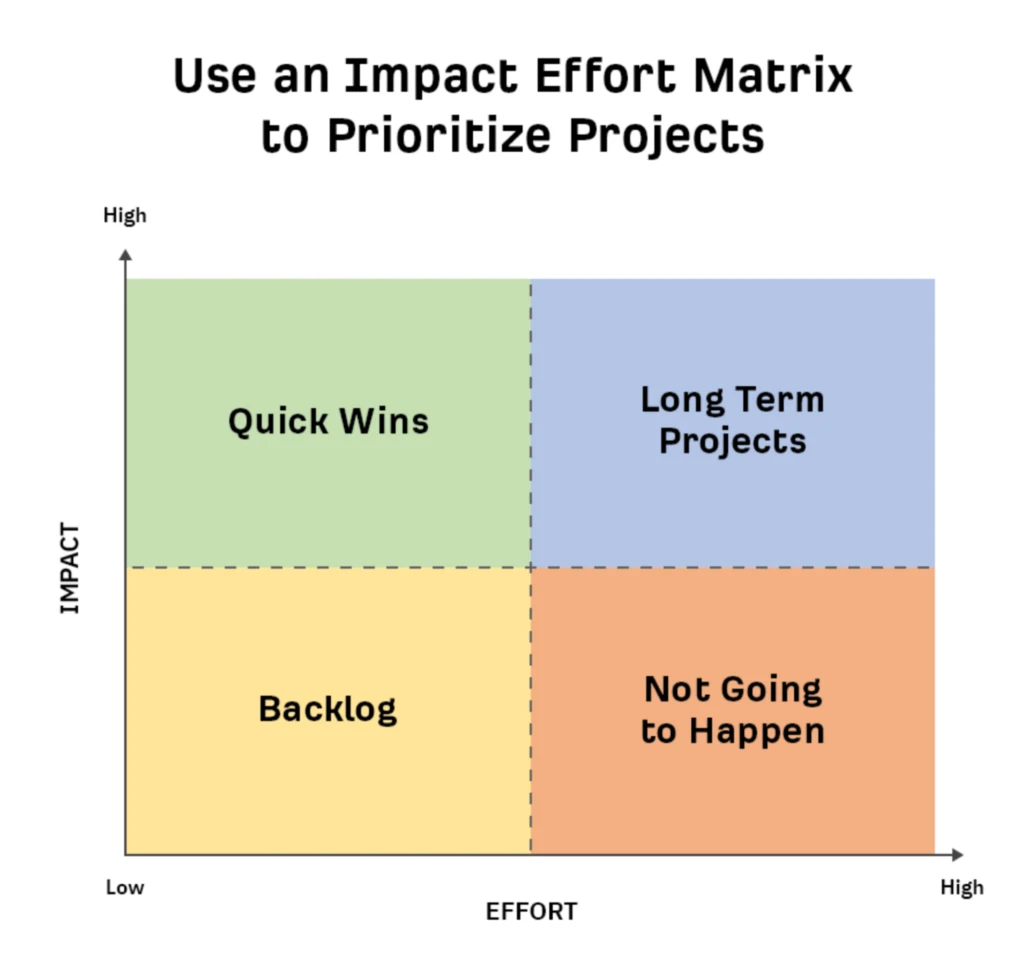
Launching an SEO Campaign That Gets Results Is Not Terribly Difficult
But it is complex and can have a lot of moving parts. However, complexity does not necessarily dictate the difficulty level.
Allow us to explain. Most of the parts could be classified as beginner-level. But, the chaining together of these parts could be challenging and end up becoming advanced because of nuances that vary by niche. For example, SEO for e-commerce would be very different compared to SEO for lawyers. More advanced SEO campaigns could include automations,
If you’re looking to launch an SEO campaign that gets results, there are a few steps to follow:
1) Make sure you have a clear understanding of what you want to achieve from your SEO efforts.
2) Start off small and build slowly.
3) Don’t forget to include keywords in your content.
4) Use social media to promote your site.
5) And finally, test everything before launching into full scale production.
When do you plan on creating and launching your next SEO campaign?








